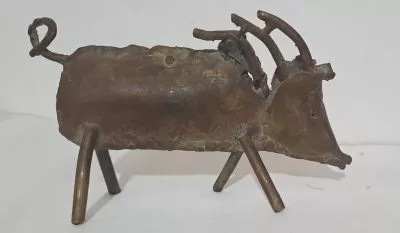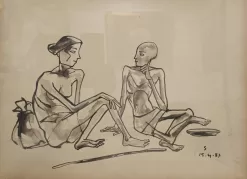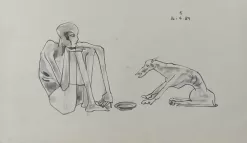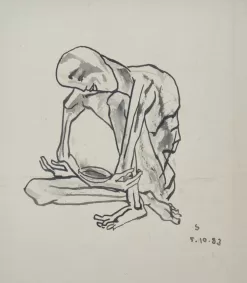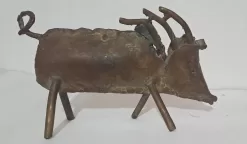Somnath Hore (1921-2006) was an Indian sculptor and printmaker. His sketches, sculptures and prints were a reaction to major historical crises and events of 20th century Bengal, such as the Bengal Famine of 1943 and the Tebhaga movement. He was a recipient of the Indian civilian honour of the Padma Bhushan.
Hore learned the methods and nuances of printmaking, mainly lithography and intaglio, at the Government College of Art and Craft in Calcutta. By the 1950s he was regarded as the premier printmaker in India. Hore invented and developed various printmaking techniques of his own, including his famous pulp-print technique, which he used in the critically acclaimed Wounds series of prints.
At the behest of Dinkar Kaushik, Hore came to Santiniketan to head the Graphics and Printmaking Department. Somnath lived most of his later life at Santiniketan, where he taught at Kala Bhavan, the art faculty of Visva Bharati University. There he became a close associate of the painter K.G. Subramanyan and the sculptor Ramkinkar Baij.
In the 1970s Hore also started making sculpture. His contorted bronze figurines recalled the agonies of famine and war, and became iconic emblems of modern Indian art. One of his largest sculptures, Mother and Child, which paid tribute to the sufferings of the people of Vietnam, was stolen from Kala Bhavan soon after it was finished and disappeared without a trace.
Hore died in 2006 at the age of 85. He is prominently represented in the collection of the National Gallery of Modern Art, New Delhi.

